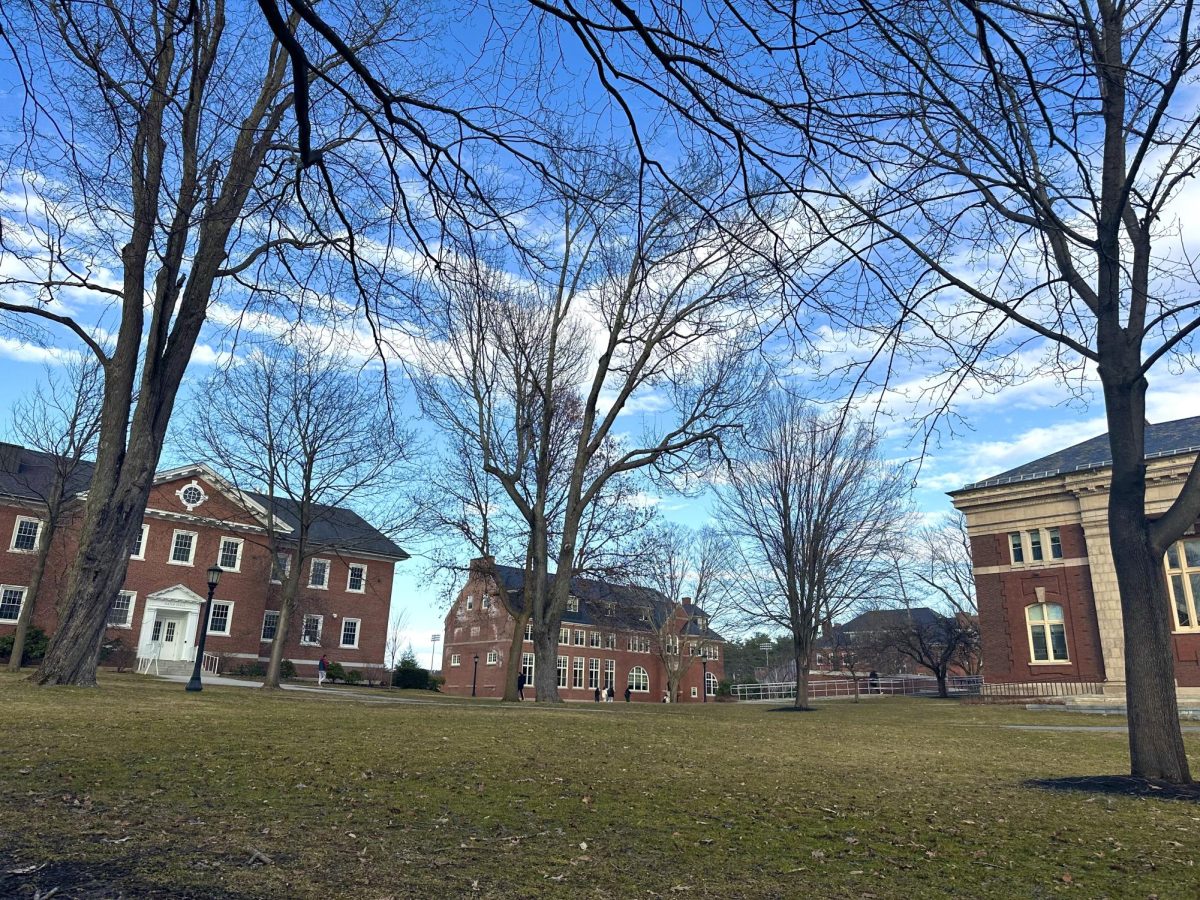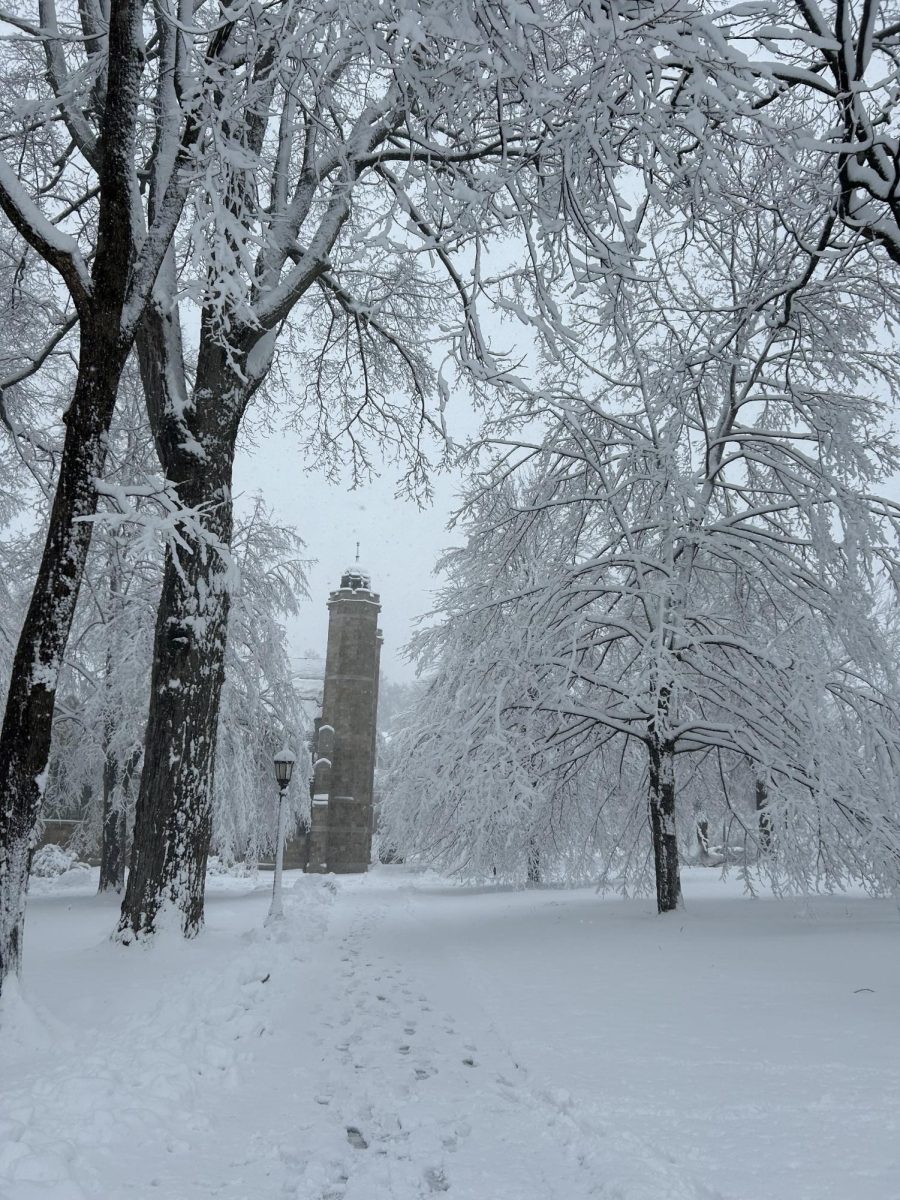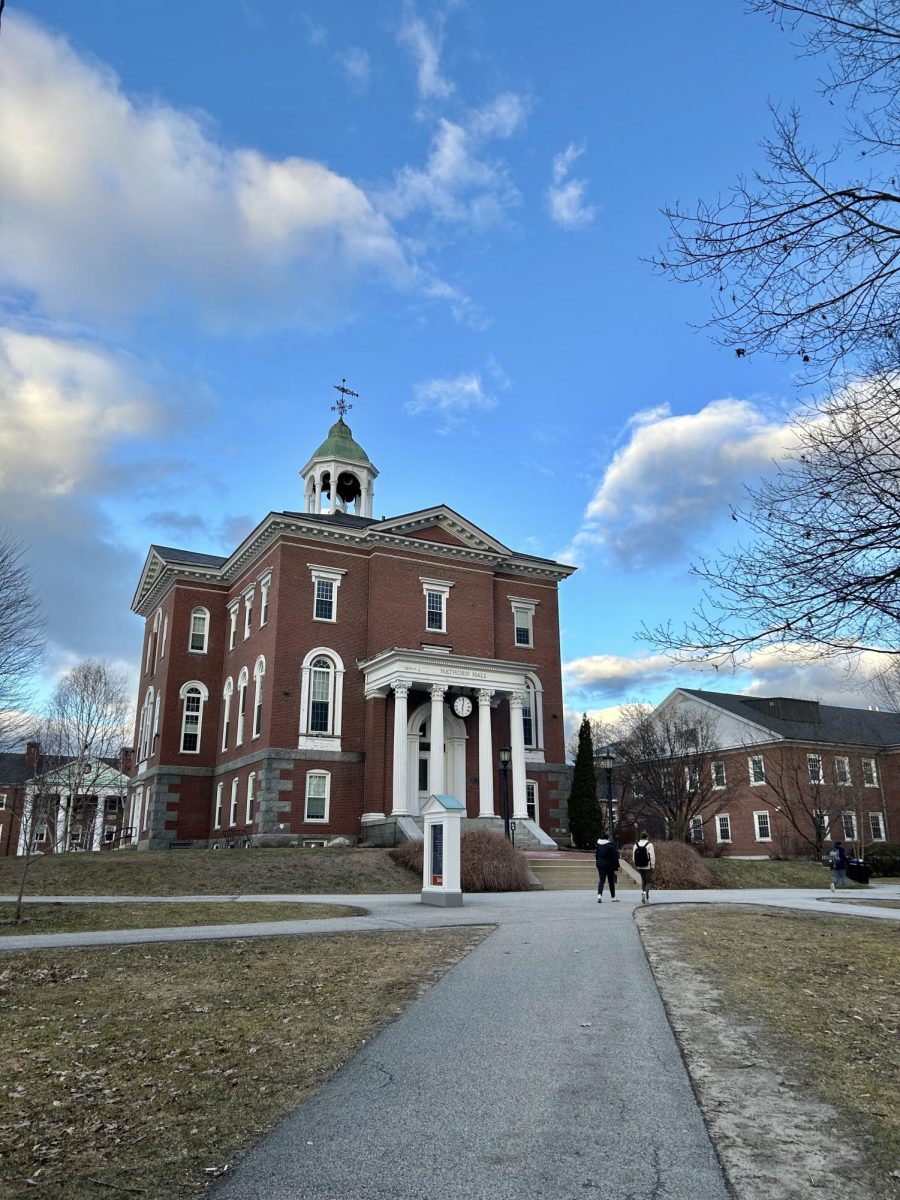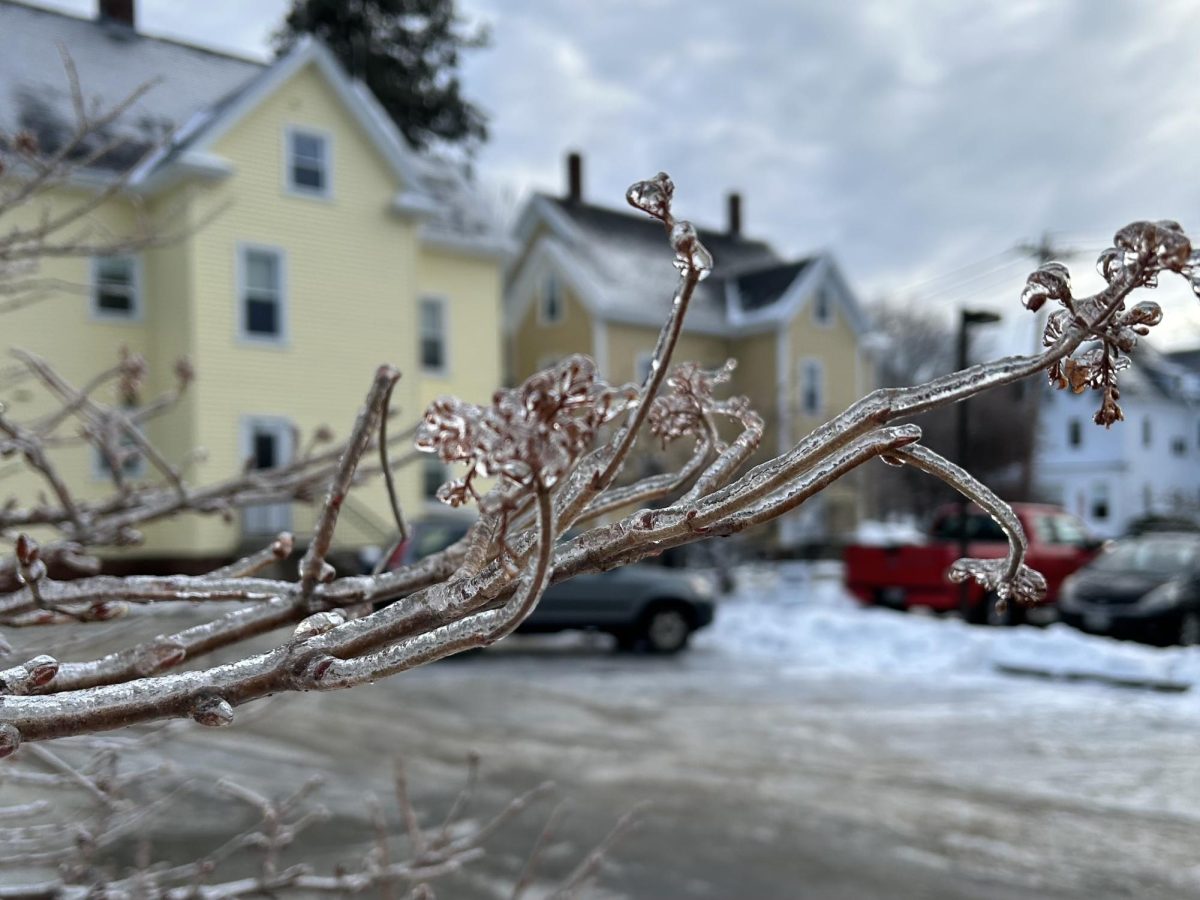An isolated sprinkler malfunction in the basement of Hedge Hall resulted in the closure of the academic building for ten days, beginning Jan. 19. Professors, events and classes were displaced while the water damage was assessed and repairs were made.
This incident occurred the day before the MLK observance at Bates. Events scheduled to occur in Hedge were quickly assigned to other locations on campus. Professors located in Hedge were unable to occupy their offices for the duration of the repairs, and classes were rescheduled by the registrar to take place in different classrooms.
In many other situations, the discharge of a single sprinkler would not elicit this level of concern. However, because the sprinkler went off in Hedge’s electrical room, numerous actions, in addition to the basic repairs, needed to occur to assess the status of the circuit breakers.
The reason for the sprinkler malfunction was simple; the device responsible for opening and closing a louvre, similar to a vent, to the outside broke, causing a nearby sprinkler head to freeze with the inflow of frigid temperatures. When the weather warmed, the damaged sprinkler thawed and released water into the electrical room.
The water damage did not spread far; Hedge’s computer lab and all offices remained undamaged. Despite the water exposure to the electrical workings within Hedge, there were no power outages.
“This was very fortunate since the winter temps would have presented further problems if power had been cut off to the building, with the potential for pipes to freeze and create larger problems,” Jay Phillips, Director of Facility Services Operations, wrote.
The Lewiston Fire Department was the first to evaluate the incident after receiving an automatic notification from the sprinkler activation and fire alarm system. Due to its proximity to the electrical equipment, the city code inspectors were called in to assess the damage.
“The primary concern was not flooding or the water release itself, but the fact that the electrical panels that contain circuit breakers were exposed to water, which can lead to corrosion and potential malfunction of this critical safety equipment for the building,” Phillips wrote.
The city code inspectors deemed that Hedge could not be occupied until the electrical equipment was replaced and the fire alarm system inspected to be sure that there were no further issues.
Despite the restricted access, students, staff and faculty were able to retrieve important items within Hedge with the help of Bates Security. Faculty and staff members found new locations on campus to do their work.
Some professors made themselves at home in the den, doing work and conducting their office hours. Others, such as Professor Camille Parrish, were lucky enough to have an alternative working space to go to. Parrish spent most of her time in the basement of Carnegie where there is a small laboratory belonging to the Environmental Studies department.
“I felt fortunate in the sense that at least I had a place to securely leave my books, lab reports, and other teaching materials for the duration of the time we were out of Hedge,” Parrish said. “Whenever I went to the Den, I saw almost all of the other Environmental Studies faculty camped out at one of the booths with their laptops plugged in.”
Bates expedited the repairs process by hiring an electrical contractor, Regional Electric, to pick up the replacement electric panels in Connecticut and complete the necessary electrical work. While ten days may have felt like a long time to those directly affected, the reality is that repairs could have taken much longer.
Hedge was originally built in 1890 as a chemistry laboratory, and was remodeled into a dorm in 1965. It served as a campus residence until 2008 when it was gutted and fully renovated, reopening as an academic building in the summer of 2011.
Despite the exterior’s age, the interior of Hedge is only a decade old. Since the primary cause of this incident was the malfunctioning louvre, per Phillips, Facility Services is exploring the possibility of relocating the louvre away from the sprinkler head to prevent similar issues in Hedge. Other buildings will be investigated to determine whether there are similar risky configurations
“One thing we know about facilities, equipment and building systems is that a failure, large or small, of equipment can occur unexpectedly at any time and for many reasons,” Phillips wrote. “We have such a large portfolio of buildings and equipment, we see these failures routinely. The impacts of equipment failures are often not as significant as what we encountered here, and our dedicated staff work very hard to properly maintain buildings and equipment to prevent failures that lead to further damage.”








